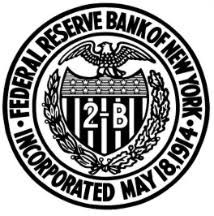Course Schedule and Contents
Week 1 – Tuesday 14th October
Introduction, Stakeholder Alignment & FTP Methodologies
Introduction
- Definition, objectives, and purpose
- FTP objectives and implementation
- FTP’s role in balance sheet optimisation and profitability measurement
- Key stakeholders: Business, Finance, Risk, Treasury, ALCO
- Transfer pricing mechanism design and whether to adopt a centralised system
- Best practices for introducing a robust FTP model
- Case study: What is NIM in business units and ALM?
Overview of FTP Methodologies
- Single-rate vs pooled methodology
- Matched maturity vs pooled funding
- Building blocks of FTP rates: commercial margins, ALM margins
- FTP in liquidity and interest rate risk management
- Types of FTP: base curve, term liquidity premium, FTP for soft vs hard currencies, maturity-matched marginal cost
- Discussion: Treasury as a profit or service centre?
FTP for Balance Sheet Optimisation
- ALM optimisation – balancing risk and return
- The role of FTP in the optimisation exercise
- ALM target position
- FTP as a steering tool for business lines
Practical Example: Case study on optimising deposit & lending strategies using FTP.
Week 2: Monday 20th October
Starts with Q&A session from week 1
FTP’s Role in Product Pricing & Incentive Structures
Impact of FTP on Product Pricing
-
- FTP as a driver of strategic product decisions
- Product pricing for loans and deposits
- Strategic FTP and business unit profitability
- Incentives for deposit gathering and lending strategies
FTP Incentive Structures
-
- Techniques for balance sheet shaping through FTP
- Incentive premiums, behaviouralisation, and management overlays
- Aligning FTP principles with business incentives
Practical Examples:
- Calculation the profitability of the product and defining return on equity
- Designing incentive structures for different business units
Week 3: Tuesday 28th October
Starts with Q&A session from week 2
Advanced FTP Techniques, Behavioural Modelling & Curve Construction
Advanced FTP Methodologies
-
- Theoretical underpinnings of advanced FTP
- Behavioural modelling of non-maturing deposits (NMDs) and optionalities
- Impact on FTP rates and maturity assumptions
- Inclusion of prepayment optionality into FTP
Constructing FTP Curves
-
- Building FTP term structures and risk-free proxies
- Construction of a blended FTP curve for a bank with access to the retail market only
- Construction of blended FTP curve for a bank with access both to retail and wholesale funding markets
- Constructing FTP curve based on forecasted funding costs
Practical Example: Hands-on exercise constructing an FTP curve using market and bank data.
Week 4: Tuesday 4th November
Starts with Q&A session from week 3
FTP, Liquidity Management, Capital Allocation, and ALCO Governance
FTP and Liquidity Pricing
-
- Pricing liquidity and its impact on profitability
- Types of premiums: liquidity, contingent liquidity, term credit premium
- Quantifying Contingent Liquidity Costs (COL)
FTP and Capital Allocation
-
- How to FTP capital and allocate cost to business lines
- Avoiding regulatory arbitrage in capital transfer pricing
Regulatory Considerations
-
- FTP alignment with Basel III/IV
- Incorporation of LCR/NSFR and stress testing scenarios
Role of ALM & ALCO
-
- Structure and function of ALM in FTP frameworks
- ALCO’s role in setting policies, adjusting FTP for market changes, and governance
- Creating a transparent governance structure
Practical Examples:
- Pricing a loan portfolio incorporating FTP liquidity premiums
- FTP and assets pricing
- FTP and deposits pricing
- FTP and off -balance sheet
Concludes with Q&A session for week 4
































